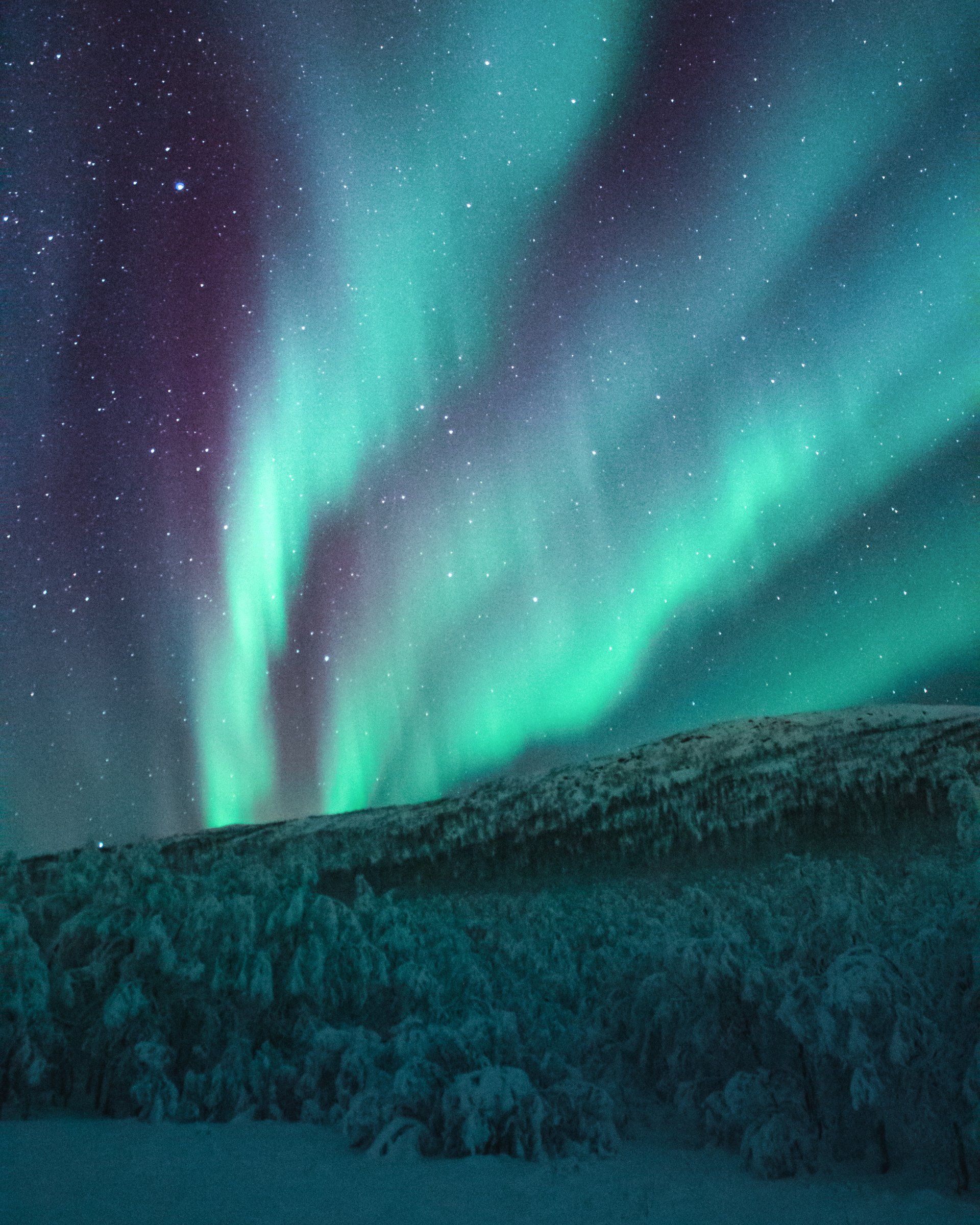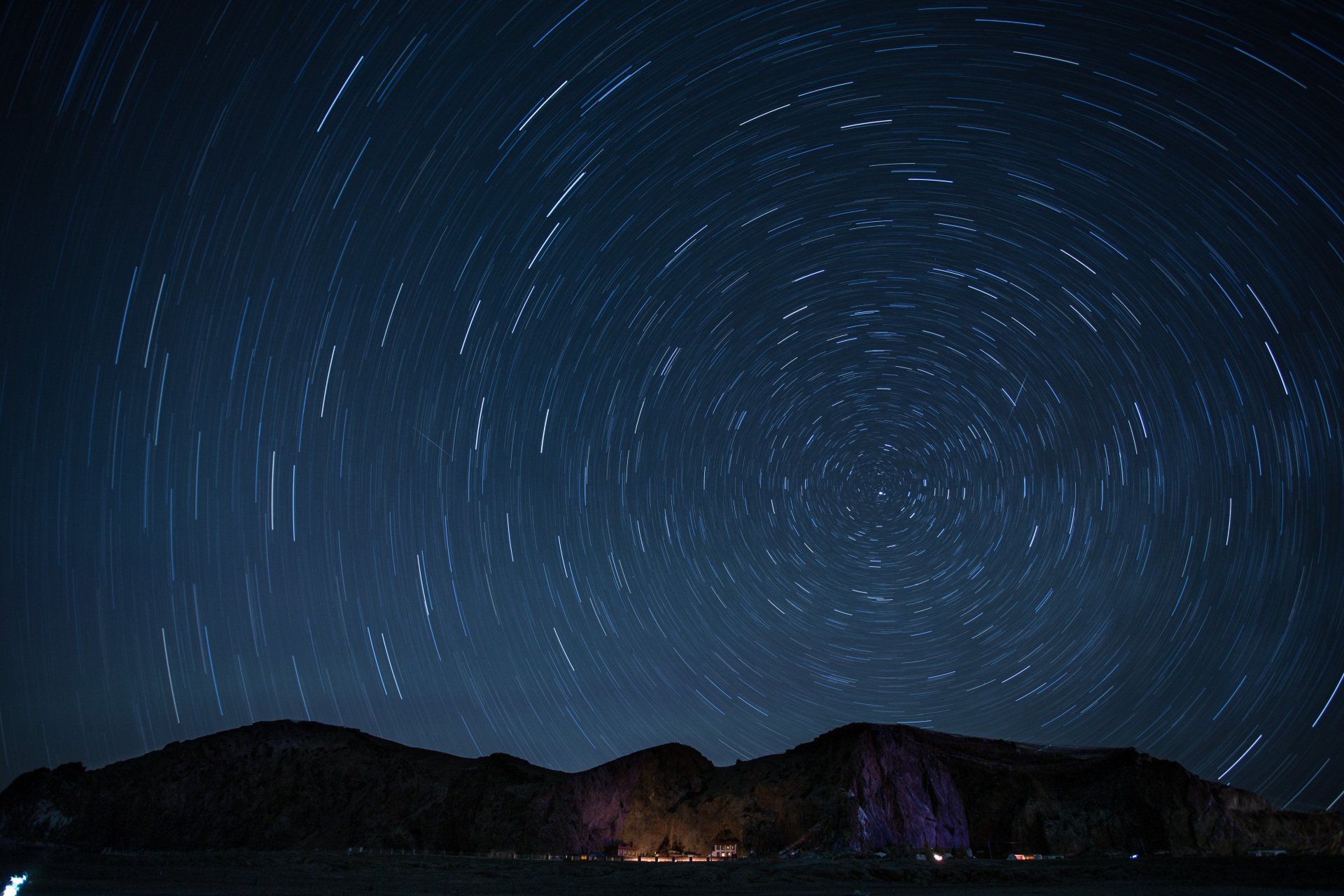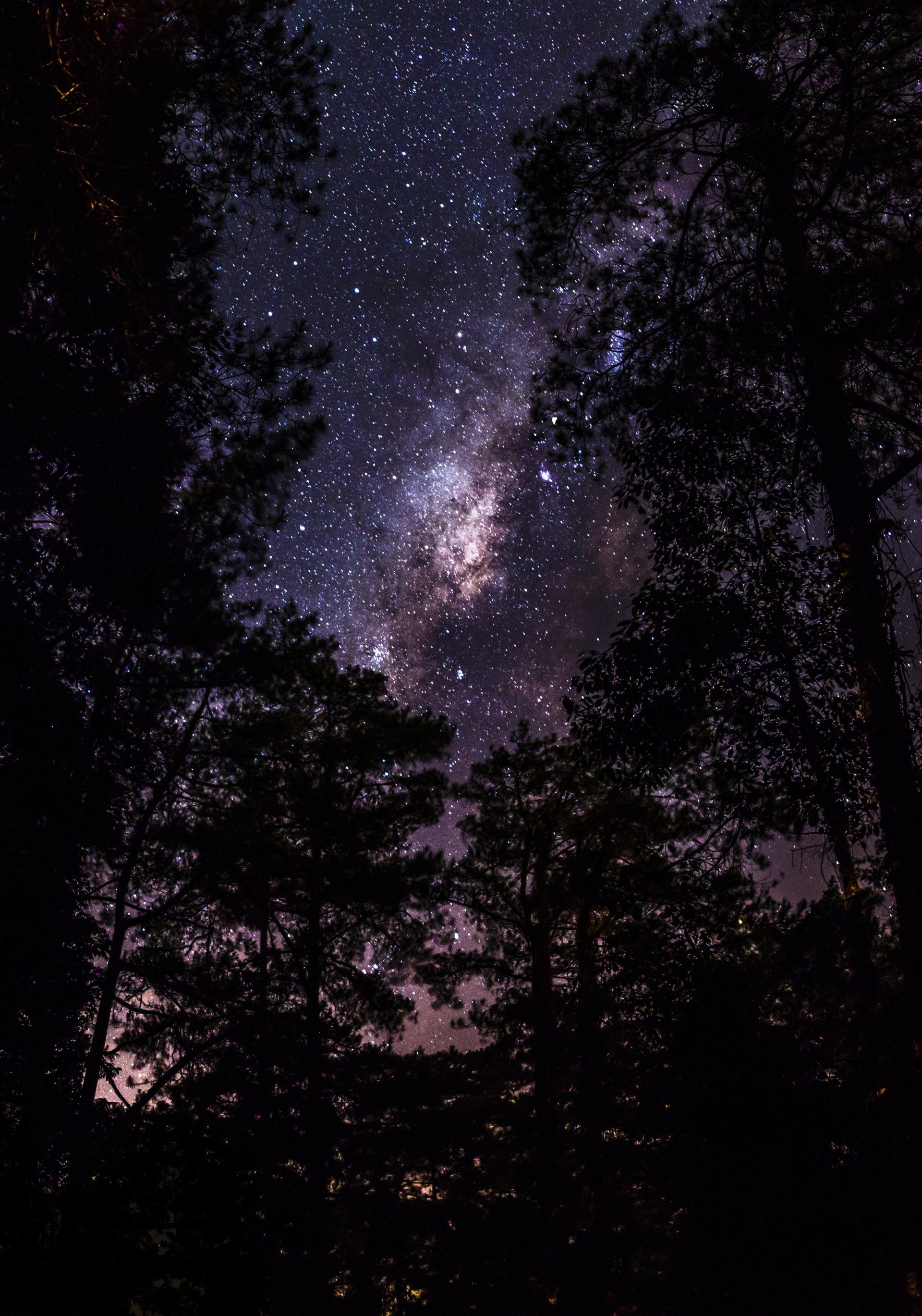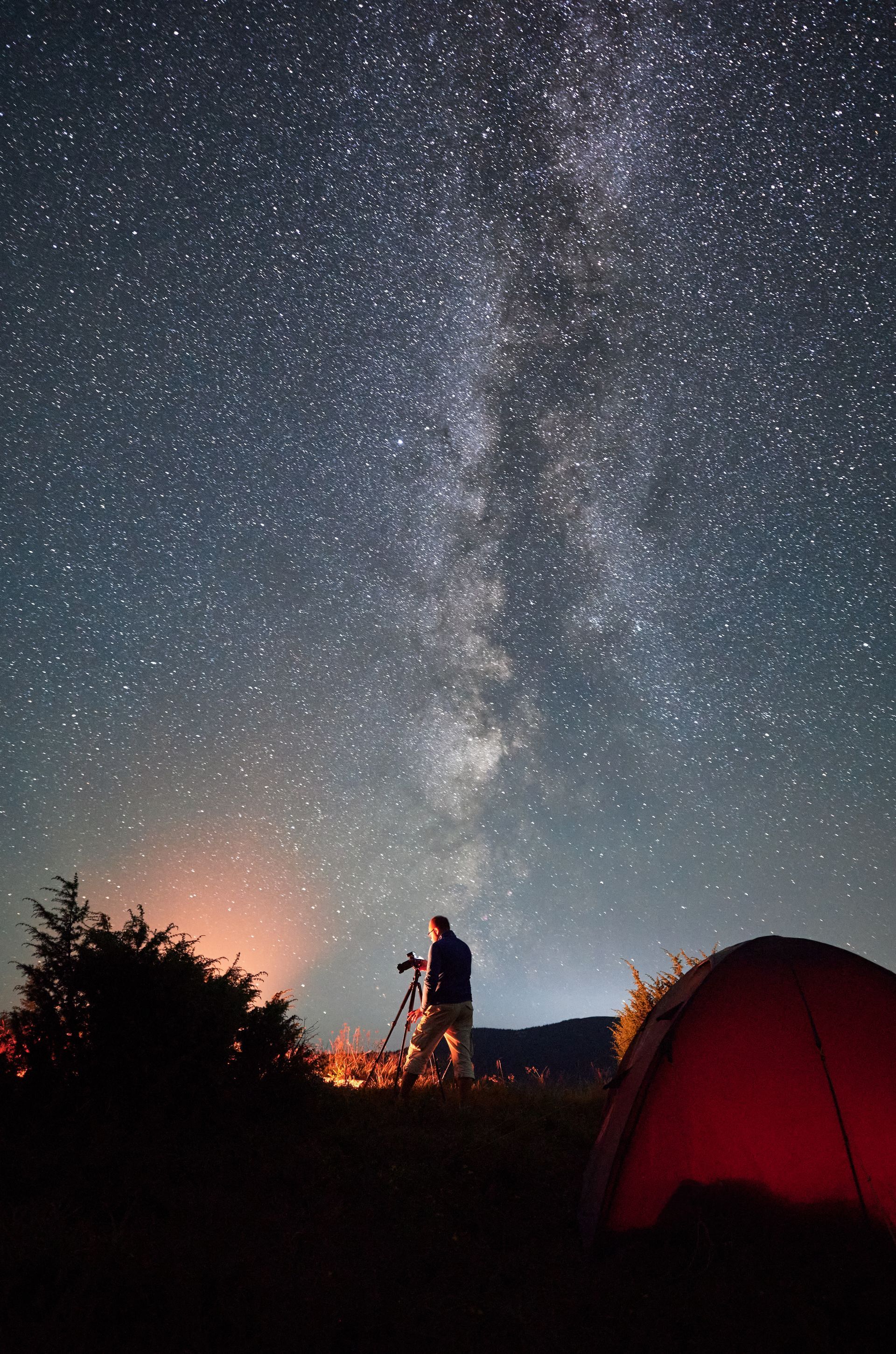A Night Under the Stars: A guide to stargazing in Byron, Maine
It’s becoming increasingly difficult to see a sky full of stars. It can be hard to get away from all the distractions of the world to marvel at the wonders of the universe. However, that doesn’t mean that stargazing has to be a dream.
The best thing about stargazing is The most magical thing about our night sky is the worldwide visibility. The night sky will look different in different parts of the world and at different times of the year, but there is always something awe-inspiring to see. You just need to know what to look for, and where to look.
Here’s our guide to stargazing in our home of Byron, Maine.
What Might You See:
The universe is bigger than we can possibly imagine. The vast expanse of space is filled with billions of stars, moons, asteroids, and more- only a fraction of which are visible from Earth. Humans have watched the night sky for thousands of years. Even still, we marvel at the beauty of what we see. From the shifting moon to shooting stars, northern lights to distant planets- there’s so much you can see when you take the time to sky-watch.

Light Shows:
Maine is one of the few states where you can enjoy the natural light shows put on by the northern sky. The two phenomena that come to mind are the Northern Lights and Meteor showers.
- The Northern Lights, or the aurora borealis, are caused by solar particles colliding with the Earth’s magnetic field. To keep the science simple, solar particles slam into the molecules in Earth’s atmosphere which heats them. This creates an effect similar to the process that makes neon signs glow. If you are hoping for a glimpse of this beautiful sight, you are most likely to see them around the equinoxes in autumn and spring.
- Meteor showers are caused when a lot of space debris enters the Earth’s Atmosphere. The debris burns as it falls, creating a “shooting star”. Most meteor showers occur at predictable times of the year. Those showers are as follows:
The Quadrantids: Early January
The Perseids: Mid-August
The Geminids: Mid-December
Planets:
If you’ve seen a star that didn’t twinkle, congratulations; you saw a planet. Planets are some of the brightest spots in the sky, as they are much closer to the Earth than actual stars. Not all planets are visible to the naked eye, but the five you can see unaided are:
- Mercury
- Venus
- Mars
- Jupiter
- Saturn
Keep in mind that plants are visible at different times of the day and the year, depending on their (and out) position relative to the sun. To get a good idea of when each planet will be visible, you can check out a website like
EarthSky or
The Old Farmer’s Almanac.
Constellations:
Constellations are groups of stars in the sky that often take a particular shape. While these stars may look close together from Earth, it’s important to note that many of the stars in a constellation are farther away from each other than they are from us! Constellations look like a bunch of dots in the sky, if you connect the dots you can start to make out the objects our ancestors named the stars after.
Beginners Guide to Spotting Star Formations:
No guide to the night sky is complete without a section dedicated solely to spotting the most famous constellations. Due to the Earth’s orbit and the tilt of its axis, not all constellations are visible throughout the year. Your location is the biggest determining factor in which constellations are visible while you stargaze.
Always Visible
In the northern sky, there are a few stars you can gaze upon at any time of the year.
Those include:
- Ursa Major/Big Dipper (the Big Dipper is not a constellation, but is part of Ursa Major)
- Polaris - The North Star
- Cassiopeia
The Dipper is one of the most recognizable patterns in the sky. Once you find the Big Dipper, which is part of the constellation Ursa Major (The Great Bear), you can start to navigate the sky to find the other constellations.
If you follow the line between the stars at the end of the bowl and extend it outward you’ll find Polaris (the North Star). If you keep going an equal distance beyond that, you’ll find stars that form the shape of an M or W. That’s Cassiopeia.


Seasonal
Most of the constellations visible in the Northern Hemisphere are seasonal. The most famous of these seasonal star formations is the Zodiac, though Orion and Andromeda are also contenders. Here’s a breakdown of which constellations you can find each season:
Summer:
- Lyra the Lyre
- Aquila the Eagle
- Sagittarius the Archer
- Scorious the Scorpion
Autumn:
- Selphinum the Dolphin
- Pegasus the Winged Horse
- Andromeda the Princess
- The Andromeda Nebula (not a constellation, but worth a look!)
Winter:
- Orion the Hunter
- Orion Nebula (also not a constellation)
- Canis Major, The Great Dog
- Canis Minor, The Little Dog
- Taurus the Bull
- Pleiades, the Seven Sisters
- Gemini the Twins
Spring:
- Leo the Lion
- Bootes the Herdsman
- Virgo the Maiden
- Corvus the Crow
There are a total of 88 official constellations visible from Earth. Not all of them can be seen from the Northern Hemisphere, and not all of them are easy to spot. For more guidance on finding which constellations are visible and how to find them, we recommend trying a
stargazing app.
Tips for the Best Stargazing Experience:
Go remote: Getting away from all the light pollution of the city is the best way to find a clear sky. The farther away you can get, the better. Optimal stargazing conditions require near-complete darkness. The more remote you can get- the clearer your visibility will be.
Check the weather: Clouds are fun to watch during the day but are not your friend when it comes to star watching. Checking for overcast skies is just one reason to check your weather app. Most apps also provide other important information like the time the sun will set and rise, and the phase of the moon. All of which can help you plan the perfect night under the stars.
Try Some Apps: We already mentioned a few websites and apps you should consider trying to enhance your star gazing. Not only will these apps tell you what to look for and when, but they can also provide you with notices about upcoming cosmic events! However, we do recommend downloading the information before you go, as some remote areas that are optimal for star watching may not have wifi or cell reception.
Bring binoculars or a telescope: Most of the things we mentioned in this article are visible without lenses, but they are even more incredible with aides. You don’t need to go out and buy a thousand-dollar telescope to have an amazing view. Regular camping binoculars will help you see more than you have ever dreamed.
Bring some bedding: If you plan on making the most of your night, we recommend bringing some bedding to get comfortable. Laying down and looking up is far better than craning your neck from a sitting or standing position. Bring a blanket for the ground, a pillow to support your head, and maybe another blanket to snuggle while you gaze.
Starry night snacks: If you are going to make a night of sky-watching, you should do it right. That means bringing along some snacks. Camping classics are always a great option if you aren’t sure what to munch. Enjoying a little treat while watching the stars twinkle is the perfect way to enjoy a perfect night.

Coos Canyon Campgrounds:
For the best stargazing in Maine, come to Coos Canyon Campground and Cabins. Located in rural Maine, our beautiful campground offers quiet nights, far from lights, surrounded by pristine nature. Book today for your perfect night under the stars!

